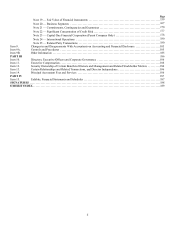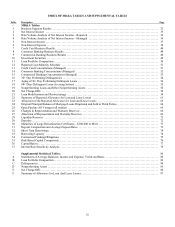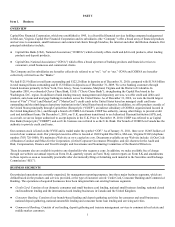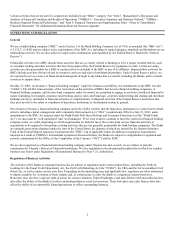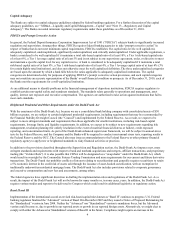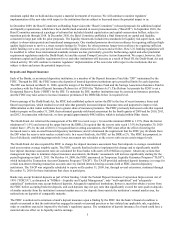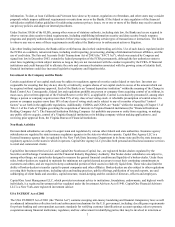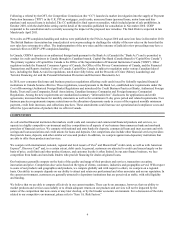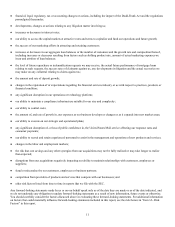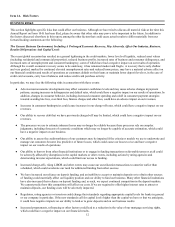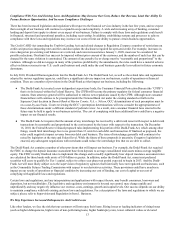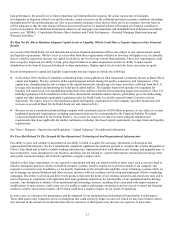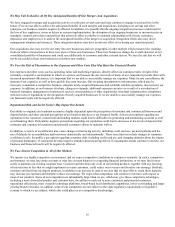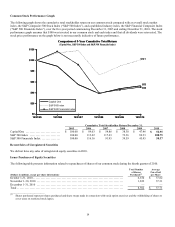Capital One 2010 Annual Report Download - page 29
Download and view the complete annual report
Please find page 29 of the 2010 Capital One annual report below. You can navigate through the pages in the report by either clicking on the pages listed below, or by using the keyword search tool below to find specific information within the annual report.
9
Following a referral by the OFT, the Competition Commission (the “CC”) launched a market investigation into the supply of Payment
Protection Insurance (“PPI”) in the U.K. PPI on mortgages, credit cards, unsecured loans (personal loans, motor loans and hire
purchase) and secured loans is included. The CC published its final report on remedies, which included point of sale prohibition, in
October 2010, with the draft Order setting out the detail of the remedies published for consultation in November 2010. COEP
responded to the consultation and is currently assessing the impact of the proposed new remedies. The final Order is expected in late
March/early April 2011.
New rules on PPI complaints handling and redress were published by the FSA in August 2010 and came into force in December 2010.
The British Bankers Association has issued judicial review proceedings to challenge the validity of the new rules on the basis that the
new rules have retrospective effect. The implementation of the new rules and the outcome of judicial review proceedings may have a
material effect on COEP’s PPI complaints handling.
In Canada, COBNA operates as an authorized foreign bank pursuant to the Bank Act (Canada) (the “Bank Act”) and is permitted to
conduct its credit card business in Canada through its Canadian branch, Capital One Bank (Canada Branch) (“Capital One Canada”).
The primary regulator of Capital One Canada is the Office of the Superintendent of Financial Institutions Canada (“OSFI”). Other
regulators include the Financial Consumer Agency of Canada, the Office of the Privacy Commissioner of Canada, and the Financial
Transactions and Reports Analysis Centre of Canada. Capital One Canada is subject to regulation under various Canadian federal
laws, including the Bank Act and its regulations, noted more fully below, and the Proceeds of Crime (Money Laundering) and
Terrorist Financing Act and the Personal Information Protection and Electronic Documents Act.
In 2010, new consumer disclosure and business practices regulations affecting credit cards issued by federally regulated financial
institutions in Canada became effective. These regulations, issued pursuant to the Bank Act, established new requirements under the
Cost of Borrowing (Authorized Foreign Banks) Regulations and introduced the Credit Business Practices (Banks, Authorized Foreign
Banks, Trust and Loan Companies, Retail Associations, Canadian Insurance Companies and Foreign Insurance Companies)
Regulations. Among the new requirements are standardized summary “information box” disclosures for applications and credit
agreements, increased disclosure for monthly statements as well as for a minimum 21-day grace period and related requirements. New
business practices requirements impose restrictions on the allocation of payments made in excess of the required monthly minimum
payment, credit limit increases, and collections practices. These amendments could increase our operational and compliance costs and
affect the types and terms of products that we offer in Canada.
COMPETITION
As a diversified financial institution that markets credit cards and consumer and commercial financial products and services, we
operate in a highly competitive environment and face competition in all aspects of our business from numerous bank and non-bank
providers of financial services. We compete with national and state banks for deposits, commercial loans and trust accounts and with
savings and loan associations and credit unions for loans and deposits. Our competitors also include other financial services providers
that provide loans, deposits, and other similar services and product. In addition, we compete against non-depository institutions that
are able to offer these products and services.
We compete with international, national, regional and local issuers of Visa® and MasterCard® credit cards, as well as with American
Express®, Discover Card® and, to a certain extent, debit cards. In general, customers are attracted to credit card issuers largely on the
basis of price, credit limit and other product features, and customer loyalty is often limited. In our auto finance business, we face
competition from banks and non-bank lenders who provide financing for dealer-originated loans.
Our businesses generally compete on the basis of the quality and range of their products and services, transaction execution,
innovation and price. Competition also varies based on the types of clients, customers, industries and geographies served. With respect
to some of our products and geographies and products, we compete globally and with respect to others, we compete on a regional
basis. Our ability to compete depends on our ability to attract and retain our professional and other associates and on our reputation. In
the current environment, customers are generally attracted to depository institutions that are perceived as stable, with solid liquidity
and funding.
We believe that we are able to compete effectively in our current markets. There can be no assurance, however, that our ability to
market products and services successfully or to obtain adequate returns on our products and services will not be impacted by the
nature of the competition that now exists or may later develop, or by the broader economic environment. For a discussion of the risks
related to our competitive environment, please refer to “Item 1A. Risk Factors.”


